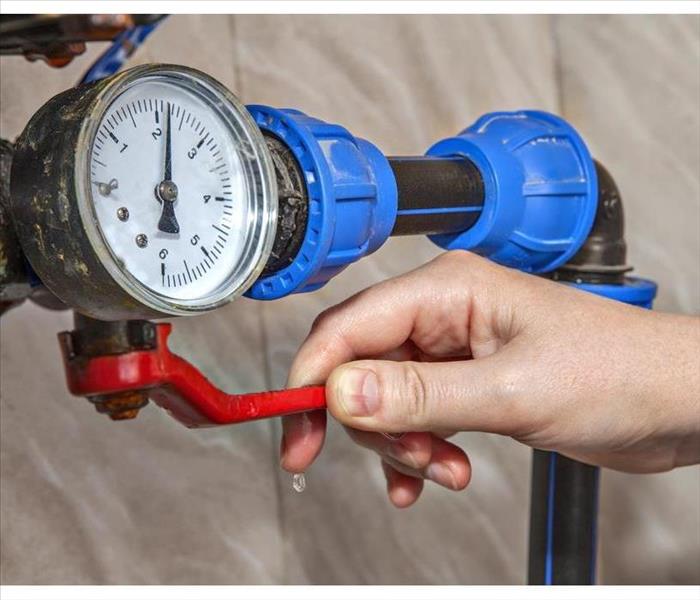A 3-Point Pipe Break Checklist
4/29/2022 (Permalink)
Checklist for Pipe Breaks
Bursting pipes call for a quick response. Any delay in shutting off the flow of water or repairing causes of damage can lead to extensive primary water damage and secondary damage such as mold. This three-point checklist can guide commercial property owners or managers through the measures necessary to respond to a broken pipe at a building located in Oakdale, MN.
1. Shut Off the Water
The main water shutoff valve should be the first stop a commercial building owner or manager makes as soon as a pipe bursts. If a building is serviced by municipal water, this valve is typically located at the point where water piping enters a structure, near a water meter. This measure can reduce the amount of water that leaks into a structure and set the stage for a plumber to fix broken pipe.
2. Contain Water Damage
Any measures that commercial building owners, managers or occupants take to slow or stop the flow of water introduced by bursting pipes from spreading can limit the damage. Consider collecting water in containers with wheels, such as rolling mop buckets or trash cans, for easier disposal or extraction.
3. Arrange for Mitigation
Taking measures to keep water damage from getting worse can reduce the extent and severity of the damage. While a building owner or manager can take a few measures, restoration professionals have the equipment and expertise to safely extract any quantity of water from a structure and facilitate drying.
Following the steps in this checklist can help a property owner or manager deal with bursting pipes at a building located in Oakdale, MN. In most cases, it is worthwhile to have professionals mitigate, clean and restore water damage. Building materials that stay damp for longer than 48 hours run a high risk of developing secondary mold damage, which is even more costly to remediate.





 24/7 Emergency Service
24/7 Emergency Service
